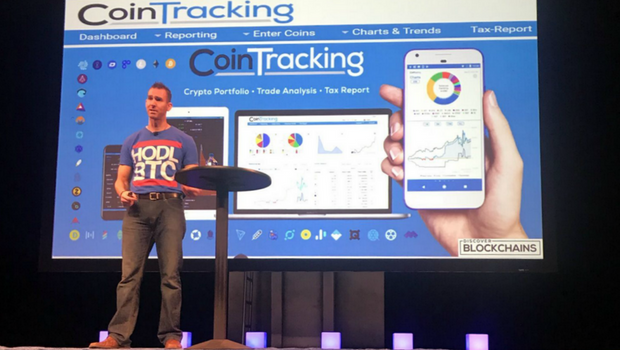Marketers in high growth companies such as start-ups typically measure their marketing traction and success using known parameters such as traffic, conversion rates, leads and various metrics that define lifecycles. For most core SaaS companies, long-term growth strategy remains the foremost objective without overlooking rapid increase in free subscription and ultimately paying conversions. As the company grows, a lot more attention is placed on sustainability and push to expand the market share. According to Kuno Creative, during the set-up stage, companies must aim to break even before the seed capital and goodwill is depleted. The aforementioned entails demonstrating growth in Monthly Recurring Revenues (MRR) in the first year or so and ensuring additional funding flow to guarantee sustainable organic growth.
The most successful entities here are those that are able to traverse the landscape by ensuring growth in qualified leads and the existence of market fit products. The other important aspect is having the ability to develop fruitful engagement. Whilst strategizing on survival and growth strategies, the marketing budget should be spent only on products that are deemed or proven to be market fit. Growth in qualified leads can be achieved successfully by building steady traffic and directing the traffic into subscribers using targeted campaigns that appeal to the audience. Once the lead is captured, the startup needs to keep the subscribers fully engaged. The traffic that flows into the business can be measured by analyzing the email opens, comments on social media and form conversions for downloads among other measurement analytics.
Marketing Strategy
Once the firm is off the ground and on the path to sustainable growth, the marketing strategy should quickly turn to achieving accelerated growth. The rapid growth stage requires firms to pay close attention to the competition, new funding streams and profitability. Most companies at this stage of development are focused on increasing the customer lifetime values and the monthly recurring revenues and reducing customer acquisition cost. When a firm reaches mature growth phase, they still need to focus on growth even though the elements such as substantial sales, existence of multiple offices, large workforces and sustainable rounds of funding may continue to work in the firm’s favor. Research has shown that a large number of SaaS based companies take between 6 to 8 months to mature before becoming viable entities.
Sales and Marketing Budget and Planning
The question as to how much and where marketing departments should spend their money largely depends on the industry, product and budget. When defining a marketing budget, whichever model the sales and marketing department decides to use, sufficient resources should be set aside to help the company attain the set goals. Sales and marketing is a crucial element in any business, since it forms the highest outlays in SaaS firms. According to Saascribe.com, SaaS companies spend between 10 to 40% of the forecast Annual Recurring Revenue (ARR) on their marking budgets. Another study has shown that highly successful SaaS companies plough between 80% to 120% of their revenues back to sales and marketing. For most part, spending caps attributed to sales and marketing depends on the product, budget, growth plans and marketing team or agency a firm wants to use.
The reason why SaaS companies spend a lot of money on marketing is because this type of business model is very different from that of the traditional businesses. SaaS entities are constantly under pressure to grow their recurring revenue and fund acquisition sprees. For high growth, non-SaaS entities looking to operate their marketing departments, the four basic tenets for a sustained SaaS marketing plan according to Blog-Hubspot includes; setting goals, tactics, resources and evaluation. Setting the goal is crucial if a company wants to develop a path to sustainable growth and future. One way to do this is by setting clearer goals and operational guidelines that will help identify areas of strength and weakness. The plan needs to focus on aligning the marketing and sales teams towards achieving shared goals and providing the necessary resources to help achieve these goals.
Use Metrics and Data
Marketers can use funnel metrics and revenue growth goals to set up prudent revenue objectives by developing a service level agreement and collaborative effort between the sales and marketing teams. The next step in ensuring successful SaaS marketing is deploying the right marketing tactics. The most effective strategies include using email marketing and lead nurturing; content marketing and paid content promotion and retargeting through the social media. The most successful content marketing strategies include blogging, influencer outreach and eBooks. Content is a crucial resource for any businesses that wants to grow its market and make forays online because it can go a long way to improve brand relations and influence the purchasing decisions of prospective customers. According to Blake Rubin, an outstanding 82% of customers feel positive about a company after reading their custom content.
Fewer B2B firms, especially those in the tech sector have sufficient scale and brand name to make it out successfully without enlisting the services of efficient sales team. For most mid-tier level companies, the sales team is mostly tasked with maximizing ROI on Google platform and the likes. Leaner start-ups, on the other hand, often take a more targeted approach by deploying smaller and well-streamlined sales and marketing teams. On the overall, most startups that make successful exits are those that have designed their own unique solutions. The other pivotal characteristics include well-coordinated sales and marketing teams that can capture and win the attention of prospective clients. Startups across various industries can also grow better by teaming up with larger companies; developing marketing channel friendly solutions and co-opting marketing hacks into their respective solutions.
Use Friendly Solutions
Using channel friendly solutions may involve linking up with firms that have bigger capacities in terms of sales force and marketing budget. When a smaller firm enters into an arrangement with a bigger firm, opportunities for capturing a bigger captive audience and new market opportunities may come knocking. Well-informed marketing hacks can also go a long way to sell a brand. However, this is not an easy thing to do, especially for startups targeting high growth. To stay on the right path at all times, every potential marketing opportunity that comes along the way should be grabbed and directed accordingly. Once the goals, budget and tactics are aligned, attention needs to shift to the resource availability and allocation. Resources should be allocated according to the set defined goals. To attain this objective, managers need to choose whether to hire an in-house or outsourced agency.
Stay Competitive
In the current competitive business environment, where every dollar spent counts companies are increasingly looking at the agencies to outsource executives, write content and undertake services such as staff recruitment. Outsourcing also helps reduce management expenses and fixed overhead cost. However, before a company decides to outsource key services to an outside agency, it is important to weigh the options to find out if the decision will affect the company’s bottom line. The other important aspect of resource is building a good marketing team structure. The team needs to be competent enough to tackle the most pressing challenges in order to attain long term growth. The last step in developing a successful SaaS marketing strategy is evaluating your plan using effective measuring metrics such as MQL velocity, SaaS metrics and opportunity sourced by market.
The whole process of developing a sound marketing plan is never easy. However, having a clearer and well throughout strategy can help define success from the outset. If you are experiencing challenges, you can hire a SaaS firms with experienced marketing teams to help you align your goals and budget with marketing strategies that support growth. SaaS on-demand software’s can be accessed by different users through the web browsers. Since SaaS is distributed instantaneously without physical distribution channels, the need to use middlemen and distribution partners is pretty much eliminated. SaaS has become a very powerful delivery model for various business applications from payroll processing software and management software’s to office and messaging software’s.
One of the emerging trends in SaaS according to Wikipedia, is the development of SaaS integration Platforms (SIP). The system is designed to give subscribers access to a number of applications through a single source whilst enhancing application development and deployment. Blake Rubin is at the forefront of developing custom SaaS solutions designed to help companies grow and stay competitive in the new information age. Rubin is especially committed to transforming the way global enterprises create quality softwares. Some of the advanced solutions offered by the company include qTest Manager, qTest Explorer, qTest Pulse and qTest Insights, a powerful real time visual and reporting tool. qTest is a popular custom test case manager while qTest Explorer is a sophisticated documentation and recording tool.










